Key takeaways:
- Vintage toys evoke nostalgia and connection to personal history, reflecting cultural values and lessons learned through play.
- Childhood friendships are foundational for emotional development, teaching resilience, empathy, and the significance of shared experiences.
- Toys serve as social catalysts, promoting teamwork and communication among children, and shaping both identities and relationships.
- Sharing toys fosters generosity and deepens bonds, highlighting the importance of collaboration and acceptance in friendships.

Understanding vintage toys
Understanding vintage toys goes beyond their physical appearance; it delves into the memories they evoke. I remember rifling through my grandmother’s attic and discovering an old tin robot that must have been from the ’60s. It was more than just a toy; it represented a slice of history, a connection to my grandparents’ childhood that brought back nostalgia and wonder.
When I reflect on vintage toys, I often wonder what stories they could tell if they could speak. Take, for instance, a well-loved teddy bear, whose fur is frayed but whose presence offers comfort. Each mark, scratch, and threadbare patch tells tales of adventures and late-night confidences, demonstrating that these toys bear emotional weight, serving as cherished companions during formative years.
Additionally, vintage toys often reflect the culture and values of their time, exposing us to past trends and innovations. I find it fascinating how a simple game like jacks, a staple from my youth, showcases not only play but also the social dynamics of learning to share and collaborate with friends. Isn’t it intriguing how these toys can spark conversations about life lessons learned through play?
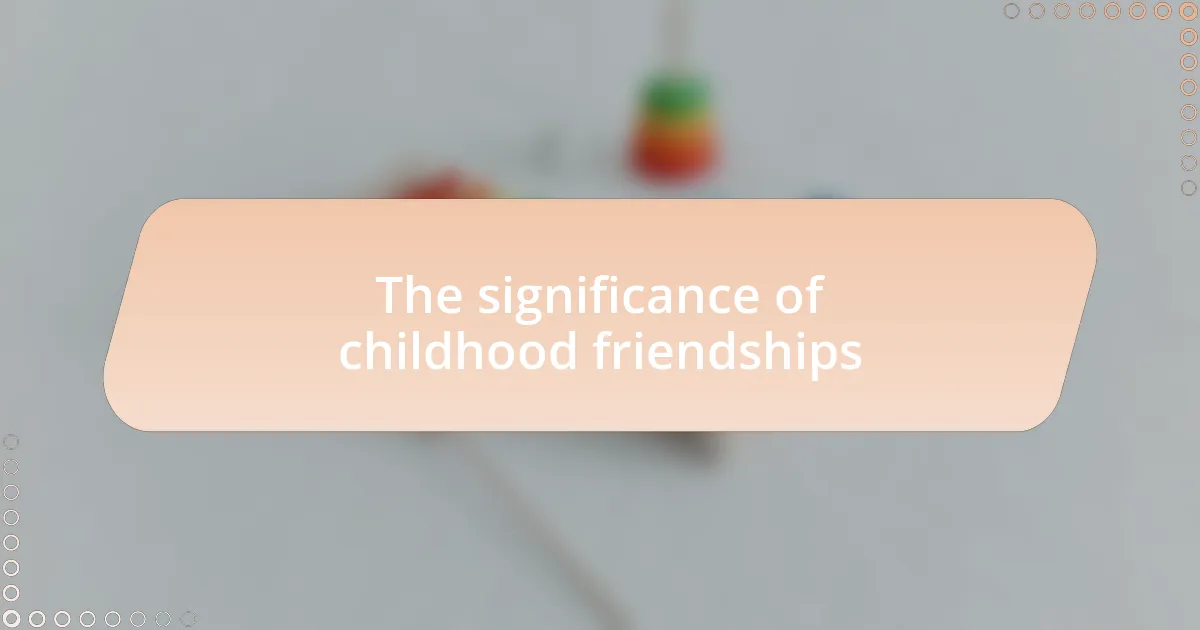
The significance of childhood friendships
Childhood friendships are often the foundation of our social lives, establishing a sense of belonging early on. I can vividly recall the thrill of running outside to meet my best friend after school, ready to embark on new adventures in our imaginary worlds. Those moments, filled with laughter and shared secrets, helped shape my understanding of companionship and trust.
There’s something incredibly powerful about the connections formed during childhood. I remember the way my friend’s excitement about a new toy often turned into a shared experience, transforming a simple playdate into a memory I cherish. Isn’t it amazing how the friends we made while playing with action figures or board games often became learnings in teamwork and communication?
Reflecting on these early friendships brings to light how they impact our emotional development. The support of a childhood friend through ups and downs can instill resilience and empathy. When I think back to the times we faced small challenges together—like deciding who gets to be the hero in our make-believe games—I realize how those interactions influenced my ability to navigate relationships in adulthood. How critical are these formative friendships in crafting our emotional intelligence? Quite so, in my experience.
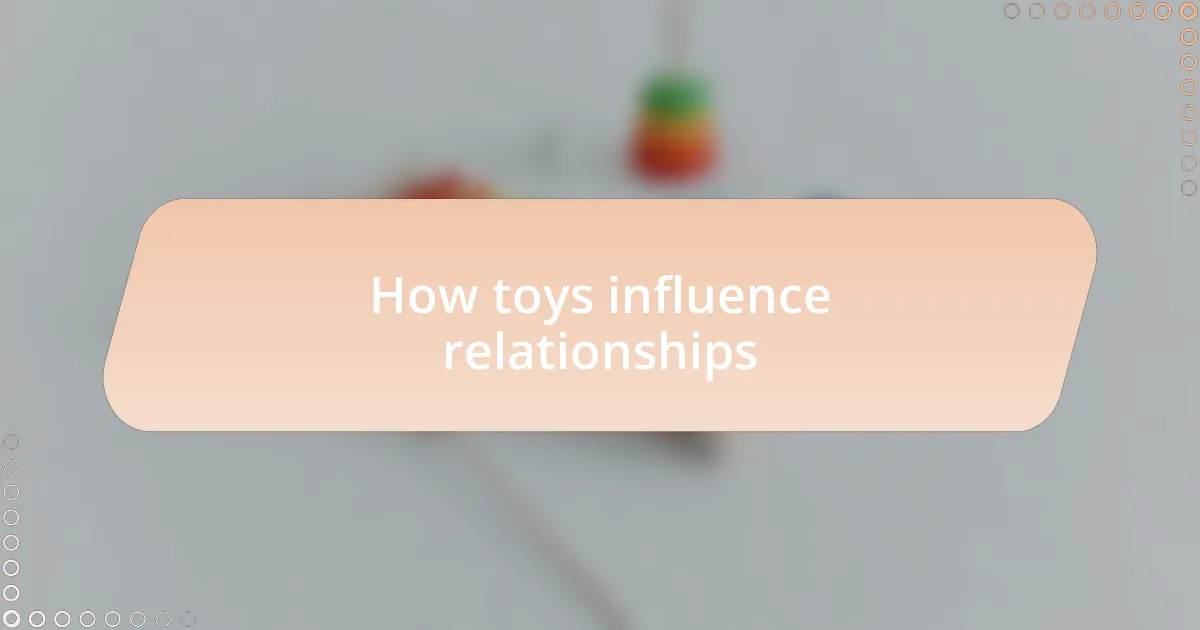
How toys influence relationships
Toys have an uncanny ability to act as social catalysts among children. I still remember how a shared box of Lego bricks allowed my friends and me to collaborate on expansive cities, drawing us closer with each new creation. Every block we placed not only built a structure but also strengthened our bond through teamwork and shared imagination.
When I think about those afternoons spent playing with dolls or action figures, I realize how those simple interactions taught us essential life skills. Role-playing as superheroes or dream households helped us learn about communication, empathy, and even conflict resolution. Isn’t it fascinating how a toy can become a bridge to understanding others’ feelings?
Moreover, toys often reflected our personalities and aspirations, serving as tools for deeper connections. The way my friend poured his heart into racing collectible cars instilled a sense of shared passion that I hadn’t previously understood. Reflecting on that now, I see how these experiences shaped not only our friendships but also our identities, creating a tapestry of shared memories that still resonates with me today.
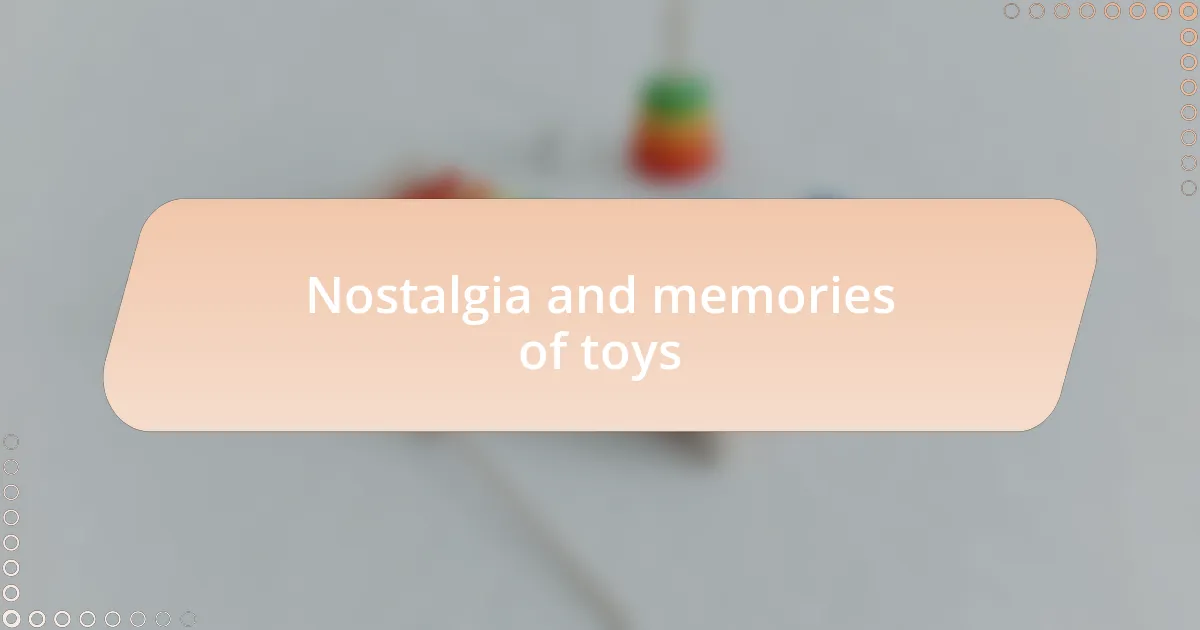
Nostalgia and memories of toys
Nostalgia hits hard when I think about my childhood toys. I still vividly remember the thrill of unearthing a vintage marbles collection at a friend’s house one summer. We spent hours crafting complicated games, our laughter echoing as we rolled those colorful glass spheres, each click and clack sparking new friendships and cherished memories.
I often reflect on how my stuffed animals held the secrets of my childhood. I named each one and shared my deepest thoughts with them during long nights. These inanimate companions were more than just toys; they were a safe space that helped me explore emotions and friendships. Isn’t it incredible how a simple plush figure can become a vessel for our most heartfelt experiences?
Thinking back, I can almost feel the excitement of racing toy cars down the driveway with friends. Each race wasn’t just about who could drive the fastest but also about the stories we crafted together in the process. Those sessions taught me the thrill of competition and the joy of collaboration—two elements that undoubtedly shaped the way I interact with others even today.
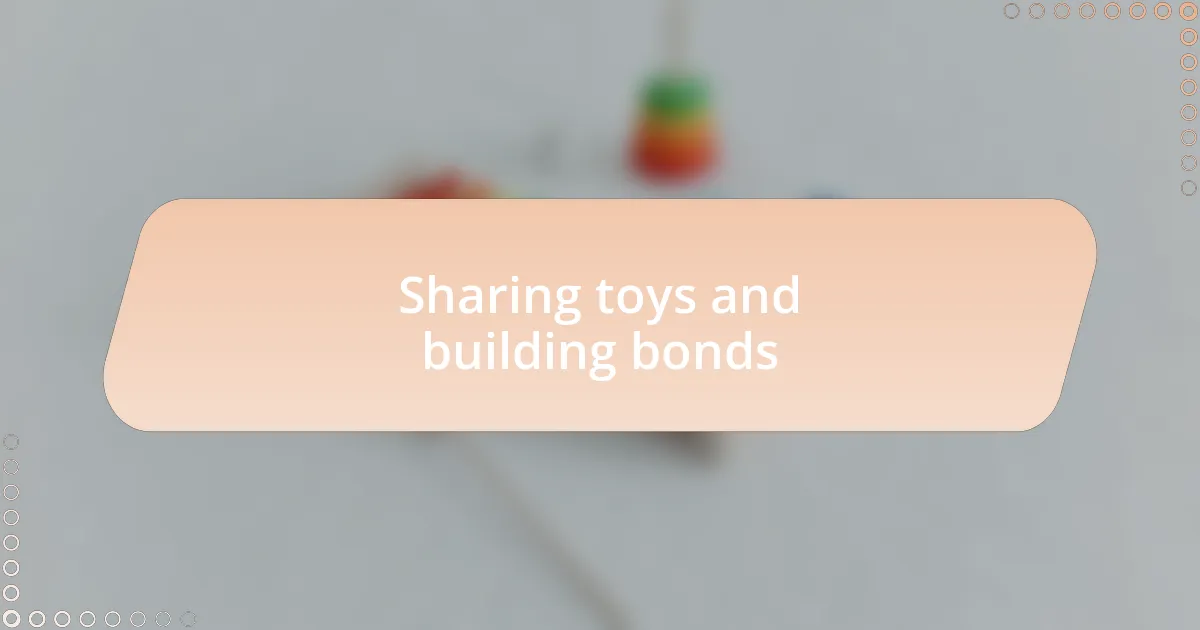
Sharing toys and building bonds
Sharing toys can be a powerful catalyst for building lasting friendships. I remember the day my friend invited me over to play with his Lego bricks. We spent hours designing cities, each creation symbolizing the cooperation and shared imagination that blossomed between us. Isn’t it amazing how these simple interactions can turn playtime into profound moments of connection?
I also think about the times we traded action figures – a gesture that seemed small but carried immense significance. Lending my prized superhero to a friend felt like a rite of passage; it wasn’t just about the toy itself, but about trust and the willingness to share a piece of my cherished world. Those childhood exchanges set the stage for the value of generosity and empathy in my adult relationships.
Even the act of passing a toy truck back and forth embodies the essence of friendship. It’s more than just playing; it’s an unspoken agreement to explore, imagine, and create memories together. Each shared moment deepened our bond, teaching me that true friendship thrives in the spirit of sharing and collaboration. Have you ever realized how the simplest acts of sharing can lead to the most profound connections?
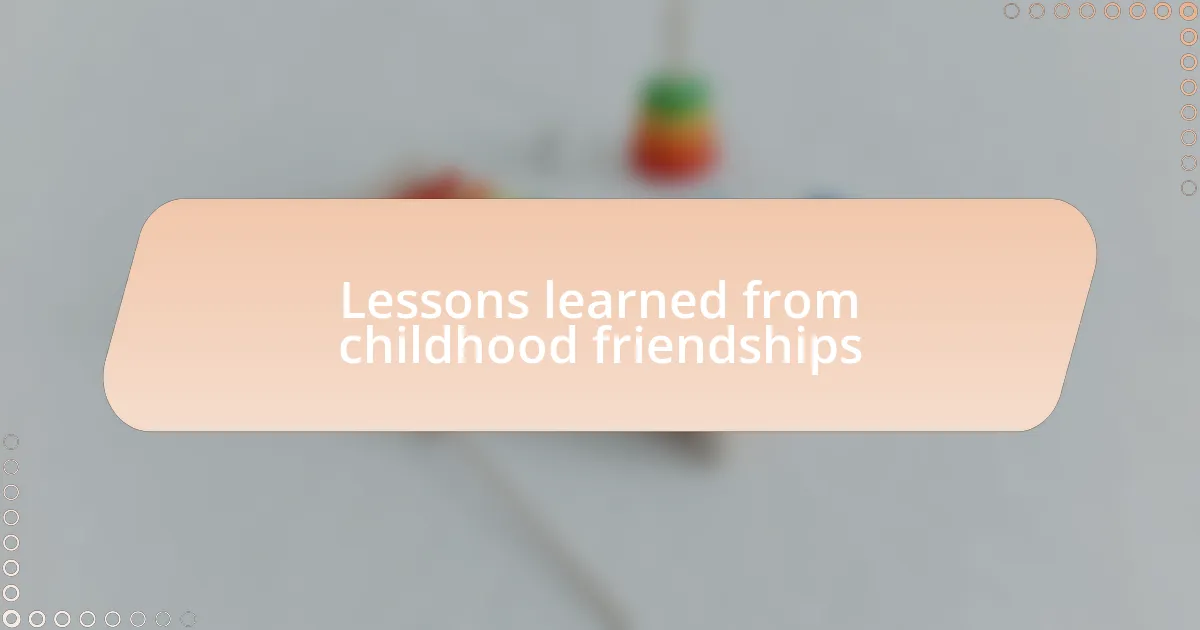
Lessons learned from childhood friendships
In childhood, friendships often teach us about the importance of forgiveness. I vividly recall a disagreement about whose turn it was on the swings, which led to a moment of silence and hurt feelings. But a simple apology restored our laughter, reminding me that conflicts are natural. Have you ever noticed how quickly children bounce back from disagreements? They show us that letting go of grudges is vital for maintaining strong connections.
Another profound lesson is the joy of acceptance. Growing up, I had a friend who loved to collect toy trains, while I was more into action figures. Despite our differing interests, we spent countless afternoons together, weaving our hobbies into elaborate play scenarios. This taught me that true friendship doesn’t require uniformity; rather, it flourishes in embracing each other’s unique passions and quirks. How beautiful is it when friendships can expand our horizons?
Finally, childhood friendships impart the value of loyalty. I remember feeling supported when a friend stood up for me after I struggled with a game. That moment taught me that having someone believe in you reinforces self-worth and inspires resilience. Reflecting on these moments makes me appreciate how these early experiences shape the loyal bonds I cherish today. Isn’t it remarkable how the lessons of our youth stay with us throughout our lives?